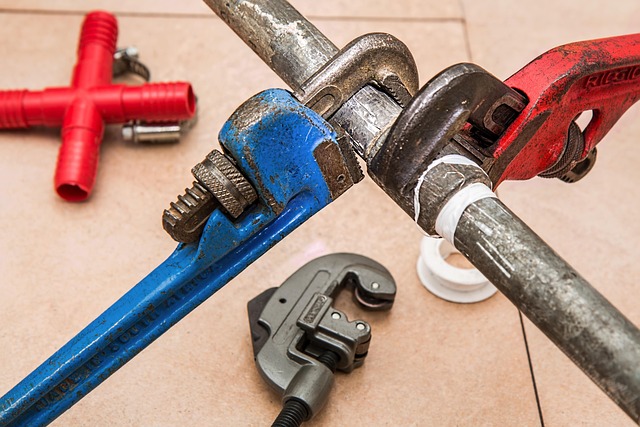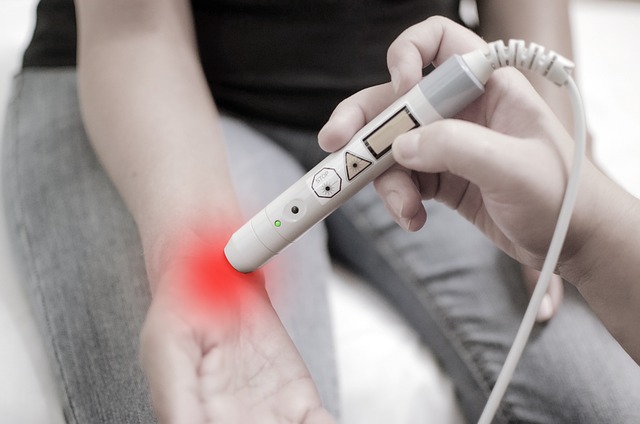Water line leaks caused by aging infrastructure, temperature fluctuations, and poor material/installation can lead to significant property damage, mold growth, and electrical hazards. Prompt leak detection using modern technologies like sensor technology and data analytics is crucial for residential and commercial properties to prevent these issues, reduce costs, and ensure integrity. Advanced algorithms, real-time monitoring, and smart sensors enable precise leak identification, saving time, resources, and minimizing infrastructure damage. Regular maintenance, including pipe inspections and corrosion checks, along with proactive steps like DIY checks and professional services, is vital for preventing leaks in older homes.
Water line leaks can cause significant damage and unnecessary water waste. This comprehensive guide delves into the world of leak detection, exploring common causes and effects, traditional methods with their pros and cons, and advanced technologies for efficient identification. Learn how to spot signs of a potential leak, understand when to call professionals, and discover preventive measures to maintain your water lines. Implement these strategies to safeguard your home and reduce water losses.
Understanding Water Line Leaks: Common Causes and Effects

Water line leaks are a common plumbing issue that can have significant impacts on both residential and commercial properties. Understanding their causes and effects is essential for prompt leak detection and effective mitigation. One of the primary causes of water line leaks is aging infrastructure; over time, pipes weaken and develop cracks or corrosion, leading to gradual seepage. Additionally, extreme temperature fluctuations, especially during winters, can cause pipes to expand and contract, putting stress on connections and joints, which may eventually fail.
Another common factor is pipe material and installation quality. Older homes might have lead or copper pipes that are more susceptible to damage compared to modern PVC or plastic pipelines. Poorly installed lines or those with faulty fittings also pose higher risks of leaks. The effects of water line leaks can be far-reaching, from minor water wastage to substantial property damage. In extreme cases, continuous leaks can lead to mold growth, weakened structural integrity, and even electrical hazards. Prompt leak detection is crucial to prevent these issues and minimize potential costs of repair.
Traditional Leak Detection Methods: Pros and Cons

Traditional leak detection methods, such as visual inspection and manual testing, have long been the gold standard in identifying water line leaks. These approaches rely on human observation and often involve time-consuming processes like shutting off water supplies and manually checking for wet spots or air bubbles. While they are straightforward and cost-effective, they can be unreliable, especially in large or complex plumbing systems. Visual inspections might miss subtle signs of leakage, leading to delayed repairs and potential water damage.
The main advantages of traditional methods lie in their simplicity and accessibility; however, their cons significantly impact efficiency and effectiveness. Conversely, modern leak detection technologies, driven by advancements in sensor technology and data analytics, offer more comprehensive and precise solutions. These innovative approaches, including smart meter analysis and non-invasive surveillance, provide real-time leak monitoring, enabling prompt identification and repair, ultimately reducing water waste and damage.
Advanced Technology for Efficient Leak Identification

In the realm of water line leak detection, advanced technology has revolutionized efficient leak identification. Modern systems employ sophisticated algorithms and real-time data analysis to pinpoint leaks with unprecedented accuracy. These technologies can detect even the tiniest fluctuations in water pressure, enabling prompt action before minor issues escalate into major crises.
By integrating smart sensors, machine learning, and remote monitoring, leak detection has become more proactive rather than reactive. This not only saves time and resources but also minimizes damage to infrastructure. With such advanced tools at their disposal, water management teams can effectively maintain and optimize their networks, ensuring a reliable supply for communities worldwide.
Homeowner's Guide: Spotting Signs of a Potential Leak

As a homeowner, staying vigilant about potential water line leaks is crucial for maintaining a safe and efficient plumbing system. By being proactive, you can save yourself from costly repairs and unnecessary water wastage. Here’s a simple guide to help you spot signs of a leak early on.
Regularly check for any unusual noises coming from your pipes, such as dripping or hissing sounds. Even small leaks can make a significant difference over time, so don’t overlook these subtle indicators. Also, keep an eye out for persistent, mysterious water spots on walls, ceilings, or floors, especially in areas near fixtures like sinks and toilets. If you notice any moisture accumulation that seems unrelated to known sources of water usage, it could be a red flag indicating a leak somewhere in your plumbing system, warranting further investigation through professional leak detection methods.
Professional Leak Detection Services: When to Call Experts

Water line leaks can be frustrating and costly issues, especially if left undetected for extended periods. While some minor leaks may be manageable through DIY methods, such as checking pipes regularly and monitoring water bills, professional leak detection services offer a more comprehensive solution. Calling experts is advisable when dealing with suspected or recurring leaks, particularly in older homes or buildings where pipes are more challenging to access.
Professional plumbers employ advanced tools and techniques, like acoustic detection, thermal imaging, and radar technology, to pinpoint the exact location of a leak, even behind walls or under floors. Their expertise ensures that any detected issue is accurately diagnosed and effectively repaired, minimizing water waste and preventing further damage to your property.
Preventive Measures: Maintenance Tips to Avoid Water Line Leaks

Regular maintenance is key in preventing water line leaks. One effective measure is to inspect pipes for any signs of corrosion or damage, especially in older homes where pipes may be more vulnerable. Ensuring that valves and fixtures are well-maintained and in good working order can also help prevent leaks. Regularly checking for leaks and addressing them promptly, even tiny drops, can save significant amounts of water and money.
In addition, keeping tree roots away from sewer lines is crucial as roots can cause severe damage over time. Using protective barriers or covering pipes with root-repellent materials can deter trees from encroaching on these sensitive areas. Also, staying current with city-provided leak detection services and scheduling professional pipe inspections periodically can serve as proactive steps to identify potential issues before they escalate into major leaks.
